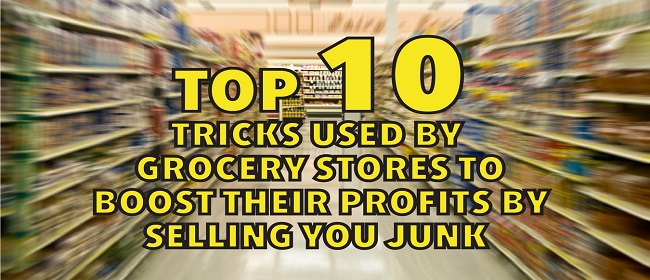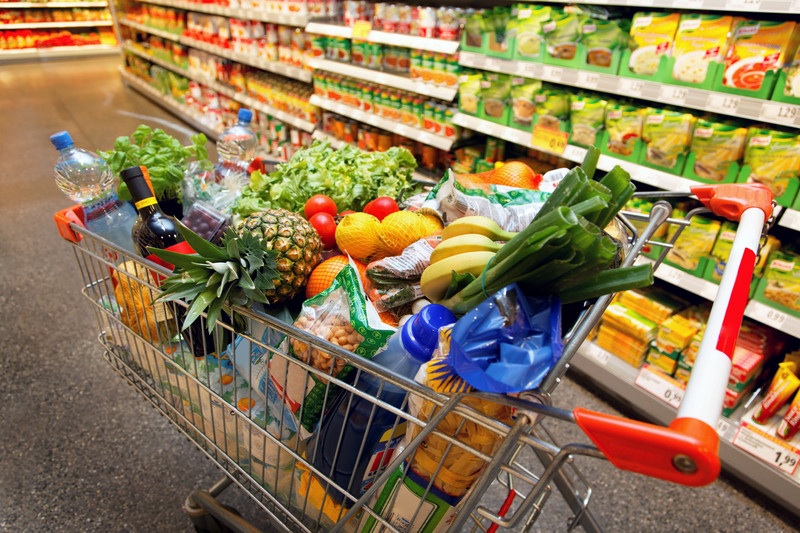
Have you ever wondered why you end up spending more money than you should at grocery stores? Has it ever happened to you that you went into a grocery store to buy a small bottle of soda but came out of it with a $100 bill? To know the answers, you need to understand the grocery store psychology. Here’re 10 tricks grocery stores use to manipulate your mind and convince you to spend more — needlessly…
Product Placement
Dairy products and daily essentials are situated at the end of the grocery stores — so by the time you reach your destination, you have already walked through all the aisles and filled your cart with items you really didn’t come to buy.
Dairy departments are almost invariably located as far from the entrance as possible, ensuring that customers—most of whom will have at least one dairy item on their lists—will have to walk the length of the store, passing a wealth of tempting products, en route to the milk, eggs, cheese and yogurt.
End Cap Placement
Products displayed at the end of each aisle are called end caps, which the grocery stores use to highlight special promotions — and trick you into impulse buying. According to the National Retail Hardware Association, a product at an end cap sells eight times faster than the same product shelved elsewhere on the aisle.
Placement Of Expensive Items
Do you ever ask yourself why you see branded, imported, more famous, and mostly expensive products right in front of your eyes, and not down the shelf? Since they catch your eyes easily, you tend to buy the costly items and don’t even bother to look at the bargain buys. The less expensive and less profitable generic brands are placed on the bottom shelves, by the grocery stores.
Placement Of Kid-Friendly Products
These days advertisers are extensively using kids to sway big decisions — not just for products meant for children, but also for products meant for grownups. More and more children are being used as story tellers in advertisements to make an emotional impact. This commodification of child psyche is being used at grocery stores, too, as a psychological trap. No wonder you find foods appealing to kids placed at kids’ eye level. The ease by which kids see biscuits with free tattoo or chocolate with free toy, the easier it is for the store to boost its sale.
Size Of Shopping Carts
Shopping carts are getting bigger and bigger. No, it is not for your benefit. According to a 2014 experiment, when the shopping cart was doubled in size, consumers went on to buy 40% more.
“When the hand basket is full customers will check out, and if there is a double basket cart you can double your sales.”
Confusing Store Layouts
So if the last time you felt like a fool for not being able to maneuver easily in a well-designed grocery store, you can breathe easy — it wasn’t your fault. The store deceived you. You are forced to walk through the entire store, even when you just want to buy a specific item. And no, the staff will have no clue where your item is placed. If they, or the layout could help you find what you want, how will you wander the aisles, look at the products that you don’t want, spend more time in the store, and likely spend more money?
The Anchor Decoy
News.com explains this strategy in detail:
[The Anchor Decoy] is a high-priced product that is not intended to sell. Rather, the retailer uses it to make the other products look attractive by comparison. The anchor decoy gets people to spend more money, by not buying it. For instance, when Williams-Sonoma introduced a bread maker for $279, it wasn’t selling. In anticipation of selling larger bread makers, they began selling a $429 model.
The costly model flopped. But sales of the cheaper one doubled. This is the anchor decoy. When Williams-Sonoma only sold the $279 bread maker it looked expensive. However, when a $429 model came out, with just slightly fewer features, all of a sudden the $279 looked like a bargain, and sales picked up.
Charm Pricing
What sounds appealing: $1.9 or $2, $99 or $100? What does that $.1 or $1 got to do with sales? A LOT. In eight studies published from 1987 to 2004, sales of products with charm pricing (price ending in number 9 like $1.99, $49 and so on) boosted by 24%. Kyle James, a retail expert and founder of RatherBeShopping.com, says:
“Whenever you see a product priced at $29.99 or $9.98, the store is attempting to ‘charm’ your brain by marking prices just below a round number. Because our brains are trained to read from left to right, the first digit is the one that sticks in our head and the number we use to decide if the ‘price is right’. This phenomena is known as the ‘left-digit effect‘ and studies have shown that it absolutely works and has a big impact on our buying decisions.”
Deals/Discounts On Poor Quality Goods
Don’t we all love deals? That’s the reason grocery stores have them — in abundance — so you not only buy more of what you want, you also buy inferior quality itemsz that you may ordinarily not need, or you had no intention of buying. This way, grocery stores not only get rid of the old cheap products, they make space for new better products on the shelves.
Background Music
Grocery stores are designed to lure you in, lead you astray, and entice you into spending money — by playing music! A 1982 study published by the American Marketing Association found that customers spent 34% more time shopping in stores that played music, than in stores that didn’t.
The tempo of instrumental background music can significantly influence both the pace of in-store traffic flow and the daily gross sales volume purchased by customers, at least in some situations. In this study, the average gross sales increased from $12,112.35 for the fast tempo music to $16,740.23 for the slow tempo music. This is an average increase of $4,627.39 per day, or a 38.2% increase in sales volume.
This article (10 Ways Grocery Stores Trick You into Buying More) is a free and open source. You have permission to republish this article under a Creative Commons license with attribution to the author and AnonHQ.com.








I’m just glad that stores can no longer use subliminal messaging in their music, or on video screens .
The bottom line is you should buy “What you plan to buy”. Shopping list always a good idea.
The generic brands are actually way more profitable for the store than name brands. They cost less but it’s a much higher profit margin because they’re not paying for someone else’s advertising and markups since they produce it themselves. Those additional costs are baked into the price the grocery store pays Tide for a box of laundry soap. The placement has more to do with agreements between the Tides of the world and the grocery stores. There’s always the stipulation that the name brands will have the more prominent and desirable shelf space.
some of these “tricks” are just vilified tactics. oh no they are using strategy…no fair. buck up bitches, dont enter enemy territory without a plan.
This.
And without being able to do math either.
The other day I saw a product that was sold by itself or in a pack of 3. The obvious thing to think is that the pack of 3 will be cheaper than buying 3 lone products. WRONG!
The pack of 3 was actually more expensive, the only difference there was was a red and yellow sticker saying “Pack of 3 !!”
Apparently that sticker was worth 3€